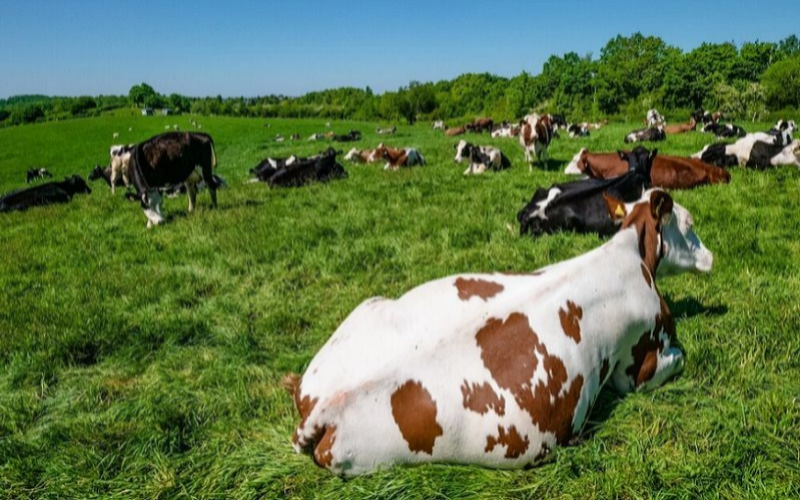Tasman Milk Fortunes Flip: A Tale of Reversal Between Australia and New Zealand's Dairy Industries

In the 1990s and early 2000s, a wave of Kiwi dairy farmers left the Land of the Long White Cloud for greener pastures on the west side of the Tasman Sea. At that time, Australia’s dairy industry was in its prime, with milk production peaking at 11 billion litres, deregulation on the horizon, and a market largely dominated by profit-sharing cooperatives. For many, Australia seemed like the land of opportunity, an enviable model for global dairy production.
Fast forward a quarter-century, and the landscape for Australian dairy farmers has changed drastically. The once-thriving industry is no longer as robust, with a significant shift in fortunes. On the other hand, New Zealand’s dairy sector, once in the shadow of Australia, has now surged ahead. The grass, it seems, is not so green on the Australian side anymore.
The Kiwi Exodus
Among those who made the move to Australia in the 1990s was Ben Bennett, the president of Australian Dairy Farmers, originally from New Zealand. Like many Kiwi farmers, Bennett was drawn to the promise of a booming industry across the Tasman. At the time, Australia’s dairy sector was a model of efficiency and profitability, admired by many.
“Back then, Aussie dairy was the envy of the world,” Bennett reflects. “But now, it’s a pretty stark contrast. Aussie and Kiwi dairy have had a role reversal in the past 20 years.”
While adverse weather events such as droughts and floods have undoubtedly taken their toll, Bennett points out that government neglect and increasing bureaucratic red tape have compounded the struggles of Australian dairy farmers. “You can only blame drought and floods to a degree. Governments have ignored the plight of dairy farmers for years. Not only that, the red tape and bureaucracy has grown substantially,” Bennett adds.
The Changing Numbers: A Stark Comparison
In recent years, the gap between Australian and New Zealand milk production has continued to widen. For nearly two decades, New Zealand has consistently outpaced Australia in milk production, and this trend has only accelerated since 2016, following the Australian dairy industry’s struggles with Fonterra and Murray Goulburn.
In the 2023-24 season, Australia’s milk pool was recorded at 8.37 billion litres, while New Zealand’s total milk production exceeded 20.5 billion litres—more than double that of its neighbour across the Tasman.
Farm Numbers: A Disparity
The number of dairy farms differs across both countries, depending on the source of the data. According to Dairy Australia, there are currently 3,889 dairy farms across the country, whereas DairyNZ counts a total of 10,485 dairy farms across New Zealand’s North and South islands.
However, the comparison of dairy herds paints a clearer picture of the disparity. New Zealand’s herd of 4.7 million dairy cattle dwarfs Australia’s 1.3 million milking cows, underscoring the gap in scale between the two countries.
A Variable Season in New Zealand
Despite the relative success of New Zealand’s dairy industry, it’s not without its challenges. Karl Dean, a dairy farmer in Leeston, located by the shores of Lake Ellesmere in the South Island, and the newly elected chairman of Federated Farmers NZ, explained that production figures in New Zealand have been highly variable this past season.
“Southland and Otago endured a very wet spring with almost constant rain, which suppressed grass growth and milk yields early on,” said Dean. “Then the North Island got hit by drought later in the season, which meant that although it was a great grass-growing season, many areas saw a slight increase in production of between 1 and 2 percent, while a few areas had a big jump of 8 or 9 percent."
Despite these fluctuations, Dean remains optimistic, noting that New Zealand’s dairy industry is “buoyed by a strong payout.”
Rising Break-Even Milk Prices
DairyNZ’s recent data revealed that the break-even milk price for New Zealand farmers has risen from $8.41 per kilogram of milk solids in the 2024-25 season to a forecasted $8.68 per kilogram for the 2025-26 season. While this increase reflects the growing costs of dairy production, DairyNZ remains positive about the outlook for the 2025-26 season, citing robust milk price forecasts and easing debt levels.
A spokeswoman for DairyNZ commented, “Despite the elevated costs, the outlook for the 2025-26 season remains positive, with robust milk price forecasts, and farmers likely to benefit from reduced debt levels and easing interest rates.”
Shared Climate Challenges
On both sides of the Tasman, dairy farmers face common climate-related challenges. In New Zealand’s North Island, regions like Northland, Waikato, and Taranaki experienced drought conditions from February onward. While dry summers are not unusual in these areas, the dryness arrived earlier this year, impacting grass growth and production.
Many farmers, particularly in Taranaki, had to rely on additional feed supplements to maintain milk production through the end of the season. Yet, despite these climate-related hurdles, Dean remains optimistic about the future of New Zealand’s dairy sector. “All in all, it’s been a good season for New Zealand dairy. It’s variable, as always, but buoyed by a strong payout,” he says.
The Tasman Divide
As the fortunes of the Tasman dairy industries have flipped, it’s clear that the challenges facing Australian dairy farmers are far from over. The combination of government neglect, rising production costs, and market suppression has left many struggling. Meanwhile, New Zealand’s dairy sector continues to thrive, bolstered by strong milk prices, efficient production, and a more favourable policy environment.
What started as an exodus of Kiwi dairy farmers to Australia in search of opportunity has turned into a stark reversal of roles. With Australia’s dairy industry facing significant challenges and New Zealand’s sector continuing to grow, the future of Tasman dairy will likely depend on the ability of both countries to adapt to changing market conditions, climate challenges, and government policies.
For now, the grass may still be greener in New Zealand.











